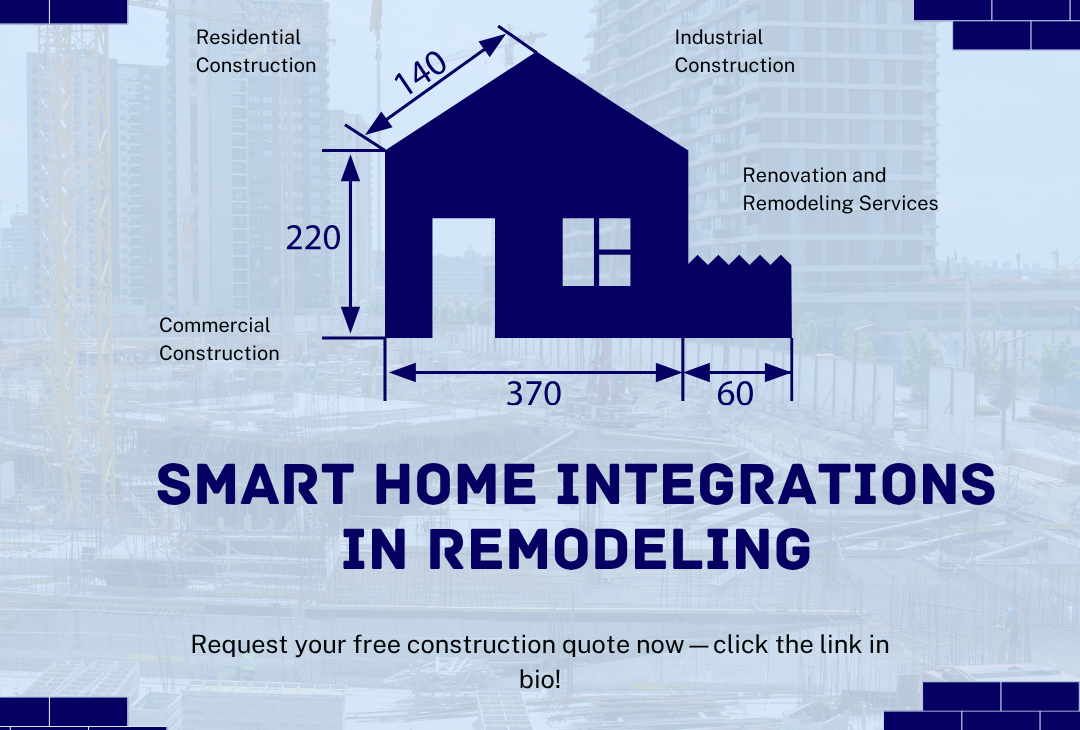oday’s homeowners expect more than beautiful spaces—they want intelligent homes that adapt to their lifestyle. As remodeling projects grow more sophisticated, integrating smart technology has become a must-have feature in both new and renovated homes. Whether you’re upgrading your kitchen, bathroom, or entire property, smart systems can make your home safer, more efficient, and easier to manage.
This guide explains how smart home integrations enhance remodeling projects, the best devices to invest in, energy-efficiency benefits, and what to consider when retrofitting older homes.
Smart Home Technologies to Include in Your Remodel
1. Smart Thermostats
Devices like Google Nest, Ecobee, and Honeywell learn your habits and adjust temperatures automatically.
Why they’re great:
- Lower energy bills
- Remote control via smartphone
- Adaptive scheduling during extreme Vegas temperatures
2. App-Based Lighting Systems
Smart lighting gives homeowners full control over brightness, color, and timing.
Top features:
- Voice control (Alexa, Google Assistant, Apple HomeKit)
- Energy-efficient LED bulbs
- Automated schedules for security
3. Smart Security Systems
Perfect for homeowners looking for peace of mind.
Components include:
- Smart doorbells (Ring, Nest Hello)
- App-controlled deadbolts
- Outdoor motion cameras
- Sensor-based alarms
These integrate seamlessly during renovations where wiring can be added or concealed.
4. Automated Shades & Window Treatments
Ideal for desert climates like Las Vegas.
Benefits:
- Keeps homes cooler
- Reduces UV damage to furniture
- Can be tied to lighting and thermostat systems
5. Smart Appliances
Modern kitchens & bathrooms often include:
- Wi-Fi ovens
- Touchless faucets
- Smart refrigerators
- Bluetooth bathroom mirrors
These not only elevate convenience but also improve energy savings.
How Smart Automation Improves Energy Efficiency
Smart systems don’t just look modern—they actively reduce consumption.
Energy Benefits Include:
- Optimized HVAC use: Smart thermostats reduce heating/cooling waste.
- Efficient lighting: Automated LEDs turn off when not needed.
- Smart plugs & power strips: Prevent standby power drain.
- Automated blinds: Reduce cooling demand by blocking excess heat.
- Data insights: Apps show energy-use patterns for better control.
In Las Vegas, where cooling costs spike during summer, automation can save homeowners 20–30% on annual energy bills.
Challenges When Retrofitting Smart Tech in Older Homes
Smart integrations are easy in new builds, but older homes need special consideration.
Common Challenges:
- Limited electrical infrastructure
Older homes may need updated wiring to support smart devices and Wi-Fi systems. - Wi-Fi dead zones
Thick walls or outdated layouts may require mesh routers or boosters. - Space constraints
Some smart hubs, cameras, and wiring systems need clean pathways that remodeling can help create. - Compatibility issues
Not all older HVAC systems synchronize with modern smart thermostats.
Best Practices for Successful Smart Home Integration
1. Plan During the Design Phase
Integrating tech early avoids visible wires and messy retrofits.
2. Prioritize the Ecosystem
Stick to one ecosystem—Alexa, Google, or Apple—for better device compatibility.
3. Upgrade Wiring Where Needed
A small investment saves headaches later.
4. Create a Centralized Control System
A smart hub or structured wiring panel keeps everything organized.
5. Work With Experienced Smart-Home Remodelers
Professionals like ADS Building & Remodeling, Robert Way Construction, and GC Pro Remodeling understand layout planning, wiring, and system compatibility.


